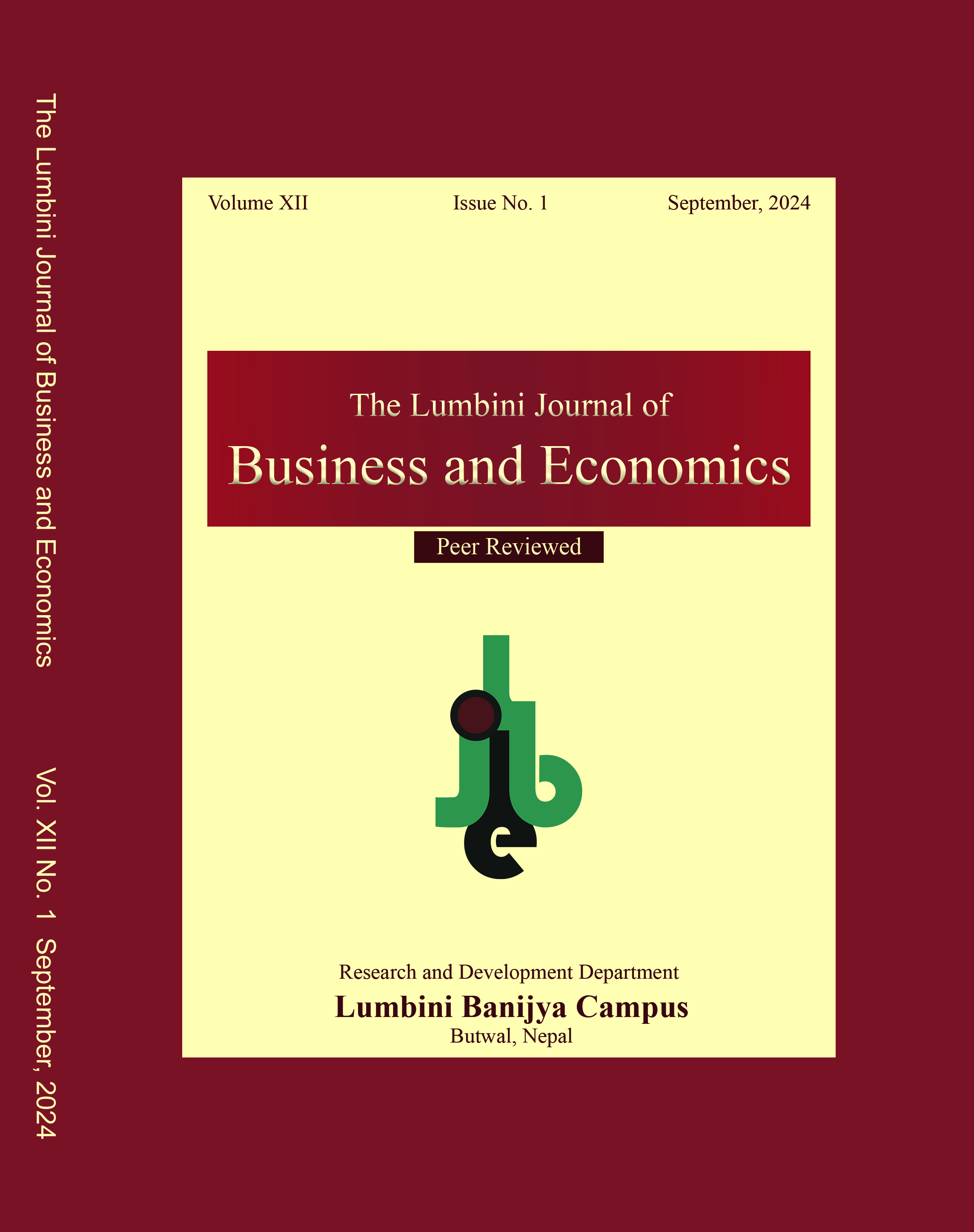Capital Structure and Profitability of Non-Life Insurance Company in Nepal
DOI:
https://doi.org/10.3126/ljbe.v12i1.70323Keywords:
Equity to assets ratio, firm size, liquidity ratio, total debt ratio, return on assets, return on equityAbstract
Purpose: The study aims to find out the non-life insurance firms in Nepal that create profit using capital. The research closely examines several important factors like business size (Size), liquidity ratio (LQ), total debt to total assets (TDR) and equity to total assets (ETA).
Methods: Secondary data were gathered from annual reports and financial statements of twelve non-life insurance firms in Nepal which provided basis for this descriptive and explanatory research design with quantitative research approach. This study used multiple regression analysis and Pearson correlation to find important impact and associations by SPSS data analysis.
Results: Debt ratios and ROA and ROE have a negative association that implies too much leverage reduces profitability. Although lowering risk depends mostly on liquidity, it also lowers assets returns. This is seen by the liquidity ratio and it greatly reduces ROA but has little effect on ROE. The equity ratio reveals how difficult it is to deploy equity correctly with a strong negative connection with ROA and a great negative link with ROE. Further illustrating the advantages of economies of scale, organizational size positively links with returns on Assets (ROA). All academics, legislators and practitioners agree that the expansion and competitiveness of the insurance sector depend on a sound capital structure.
Conclusion: According to the study, non-life insurance firms need to improve profitability by means of strategic capital structure management. Managers need to monitor whether the company has adequate liquidity and a good debt equity ratio or not if the company wants to improve overall financial success.




